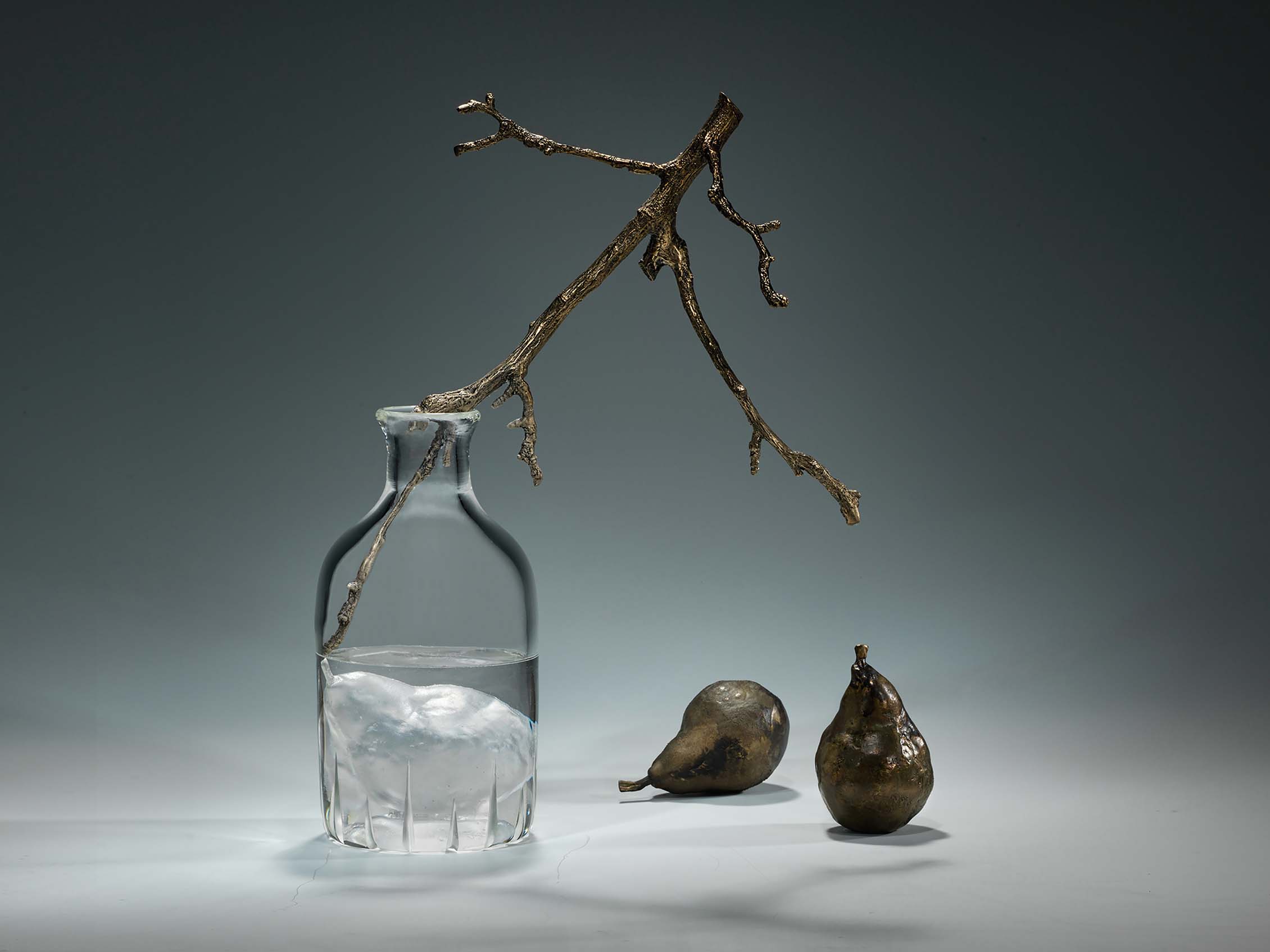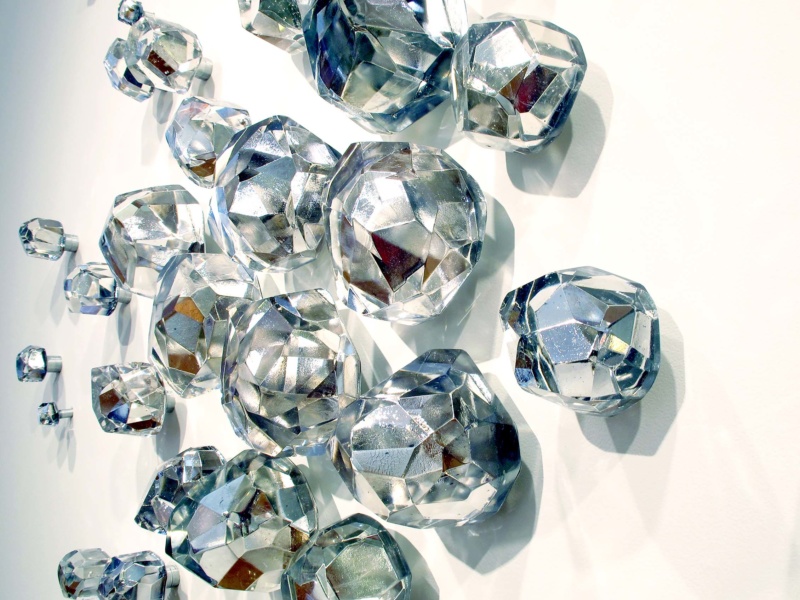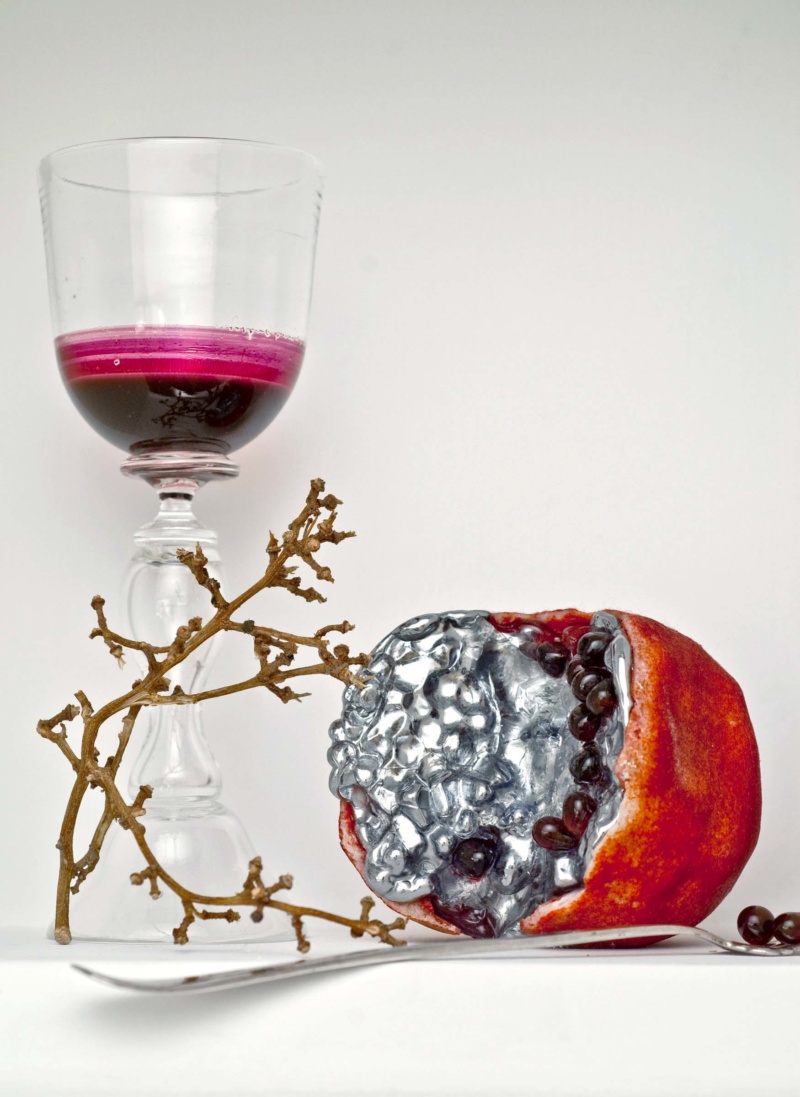
British artist Joanna Manousis demonstrates a poetic mastery of glasswork, creating sculptural pieces that push the boundaries of the medium in form and technique. In her hands, glass becomes celestial objects, balloons, fruit and mirrors—molding a space for pause and self-reflection in an expansive world. We sat down with Manousis, whose work will be on view with Todd Merrill Studio during London's international design fair, Collect, to talk about her practice. The 2019 edition of Collect opens February 27 at Saatchi Gallery.
How did you begin working with glass? As a teenager I would paint bottles and vases with clear air-drying enamels and sell them for extra pocket money. Years later, after a diversion in my painting practice, I enrolled into a BFA in Glass and Ceramics at the University of Wolverhampton in England. I have been focusing on glass as a sculptural medium ever since.
What are the challenges of this medium? Where do I start? Glass is an extremely technical material that takes many years to become proficient at. It is physically taxing—a single object can take many months, if not years, to develop, refine and complete. Sometimes you can feel that you have mastered a particular way of working, when in actual fact you have only just scraped the surface. I work across the board using multiple techniques, from glassblowing to kiln casting. Each method has its own set of challenges but the rewards always outweigh them.

What are some ways that you experiment with glassmaking techniques to achieve different looks, textures and forms? As mentioned previously, I work within a wide range of glass methods. In doing so, it is the idea that dictates the method of the making. I often experiment and create my own strategies to get to a particular aesthetic. Within my graduate studies I created a pomegranate for a three-dimensional still life. I wanted the skin and seeds of the fruit to have the detail, color and texture of a real pomegranate, yet have a gilded flesh that would reflect the viewer. It took approximately ten months to create the piece, which ended up becoming a tour-de-force of techniques that combined mold-making, glassblowing, flame-worked glass, pâte de verre (paste of glass) and gilding.
Is there any significant relationship between materials you choose, like marble and bronze, in conjunction with glass? Every material I use is considered, and I often use painting and gilding methods to give the illusion of another medium within the glass, such as aluminum or carved marble. In Distilled Portrait, the interior of a solid, cast crystal distillery jar contains the negative space of a magpie sitting on a pomegranate. Gilded with silver nitrate, the residual detail is transformed into a three-dimensional mirror reminiscent of cast metal. A taxidermy magpie sits on top of the jar, peering intently at what seems to be its reflection within. Believed to be one of the most intelligent of all birds, the magpie is one of the few species known to be able to recognize itself in a mirror. The bird personifies the collector and is forever immortalized within a jar used for holding treasured keepsakes.
Can you talk more about the idea of engaging the viewer’s gaze? I have been striving to create complex, three-dimensional mirrors within cast and blown glass that reflect both the viewer and the environment that they inhabit. When successful, a physical and symbolic union is created between the object and audience, centering them within the narrative of the work. Mirrors have a way of attracting attention and I use their innate properties to draw people in. It is within these moments that I hope the viewer can look beyond the inherent beauty of the materials to the underlying commentary that the reflection and the motif of the work suggest.

Your work seems to use many motifs—fruits, celestial bodies, arrows. What draws you to certain objects that you incorporate in your pieces? I use objects and forms that resonate on a personal, cultural and symbolic level. I believe that using motifs that exist in our everyday life engage a universal audience. The unison of alternate objects in tandem with a shift in materiality—often glass—inspires a new narrative and perspective. These are all routed to ideas relating to growth, emotionality, aspiration and mortality—ultimately what it means to be human.
How has your practice evolved in recent years and what direction do you see it heading? Within recent years I have been developing large sculptural wall assemblages and objects in the round using "core" casting techniques. These methods allow for the imprint of detailed voids within the glass, whereby the medium acts as a lens to the negative spaces within. I have been pushing the material, method and language within each new piece. Each series is often aesthetically different from the one preceding and I enjoy the spontaneity and freedom that comes with this. I am currently working towards a new body of works as a continuum from the Bottled Pear (2017–18) series. I am casting elaborately engraved cut crystal decanters that hold details that can only be read when the decanters are placed in a systematic configuration. Like pieces in a puzzle.




